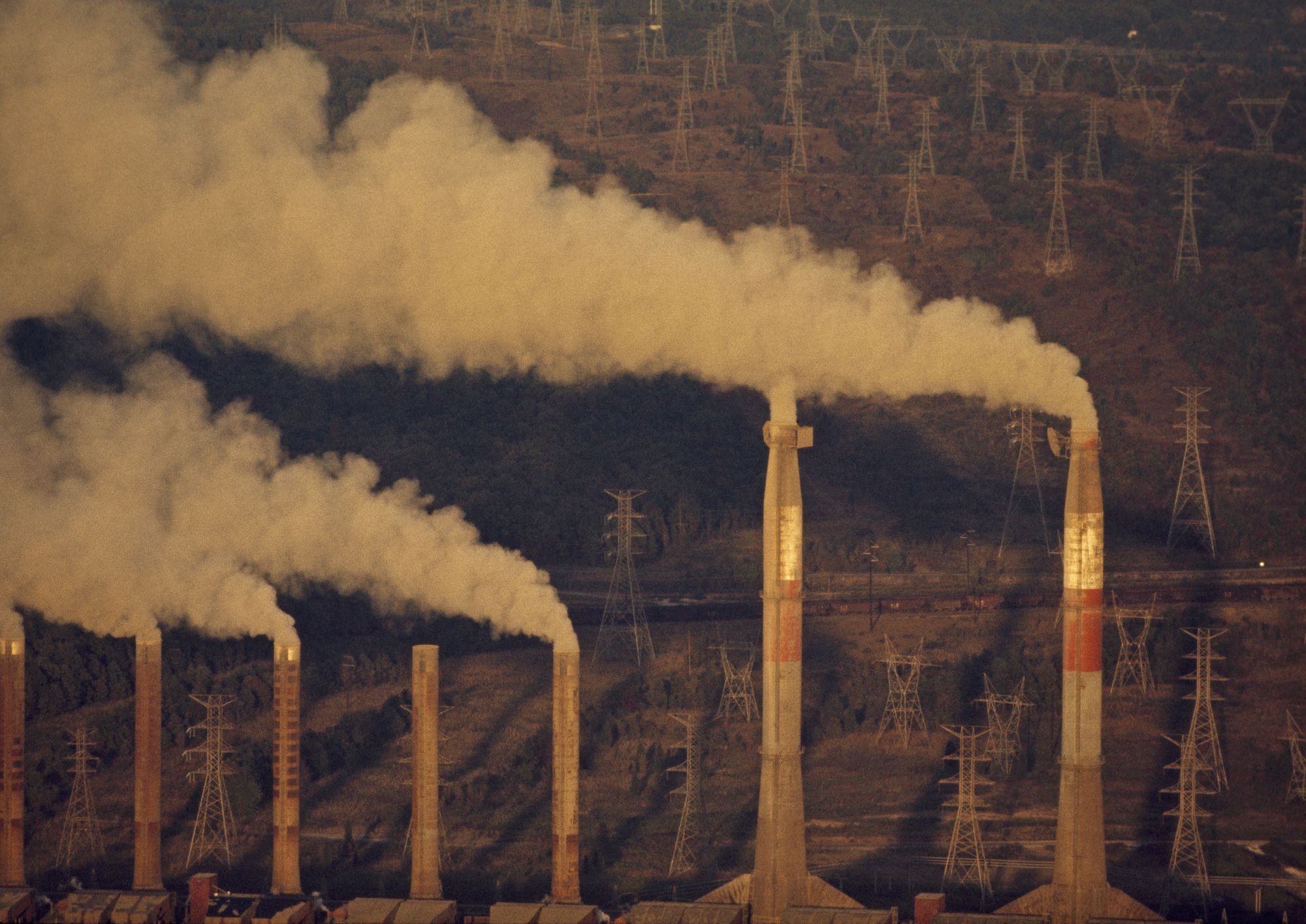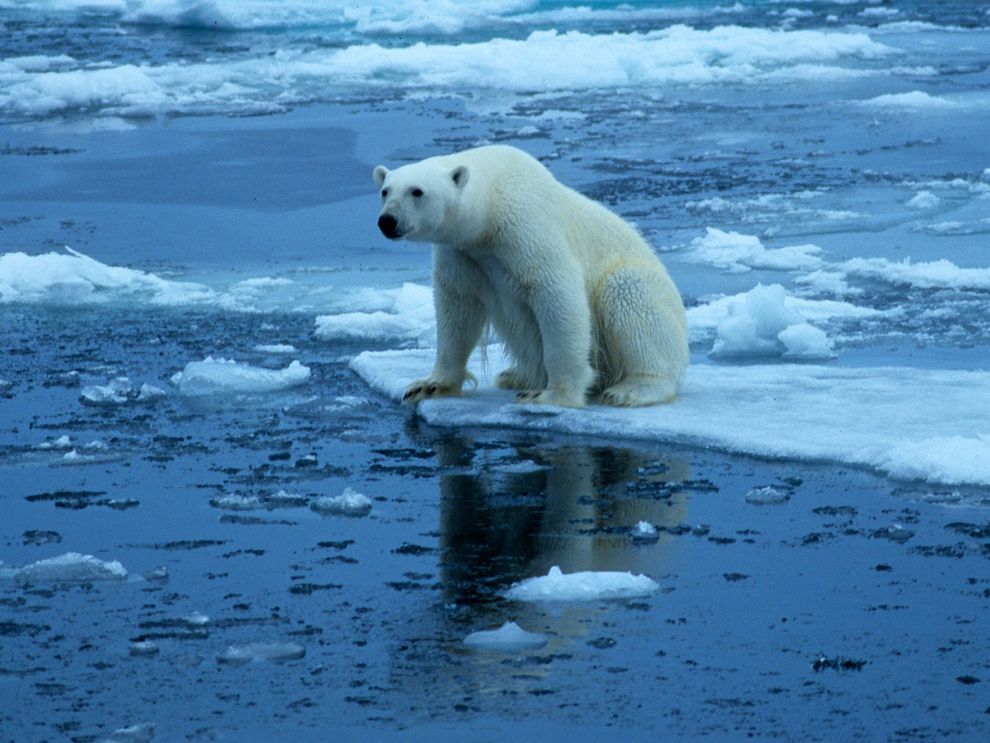Global warming is the long-term warming of the planet’s overall temperature. Though this warming trend has been going on for a long time, its pace has significantly increased in the last hundred years due to the burning of fossil fuels. As the human population has increased, so has the volume of fossil fuels burned. Fossil fuels include coal, oil, and natural gas, and burning them causes what is known as the “Greenhouse effect” in Earth’s atmosphere.
The greenhouse effect is when the Sun’s rays penetrate the atmosphere, but when that heat is reflected off the surface cannot escape back into space. Gases produced by the burning of fossil fuels prevent the heat from leaving the atmosphere. These greenhouse gasses are carbon dioxide, chlorofluorocarbons, water vapor, methane, and nitrous oxide. The excess heat in the atmosphere has caused the average global temperature to rise overtime, otherwise known as global warming.
Global warming has presented another issue called climate change. Sometimes these phrases are used interchangeably, however, they are different. Climate change refers to changes in weather patterns and growing seasons around the world. It also refers to sea level rise caused by the expansion of warmer seas and melting ice sheets and glaciers. Global warming causes climate change, which poses a serious threat to life on earth in the forms of widespread flooding and extreme weather. Scientists continue to study global warming and its impact on Earth.
In 1988, the World Meteorological Organization and the United Nations Environment Programme established a committee of climatologists, meteorologists, geographers , and other scientists from around the world. This Intergovernmental Panel on Climate Change (IPCC) includes thousands of scientists who review the most up-to-date research available related to global warming and climate change. The IPCC evaluates the risk of climate change caused by human activities. Since the Industrial Revolution in the late 1700s and early 1800s, people have been releasing large quantities of greenhouse gases into the atmosphere. That amount has skyrocketed in the past century. Greenhouse gas emissions increased 70 percent between 1970 and 2004. Emissions of carbon dioxide, the most important greenhouse gas, rose by about 80 percent during that time. The amount of carbon dioxide in the atmosphere today far exceeds the natural range seen over the last 650,000 years.
Nobody can look into a crystal ball and predict the future with certainty. However, scientists can make estimates about future population growth, greenhouse gas emissions, and other factors that affect climate. They can enter those estimates into computer models to find out the most likely effects of global warming. The IPCC predicts that greenhouse gas emissions will continue to increase over the next few decades. As a result, they predict the average global temperature will increase by about 0.2 degrees Celsius (0.36 degrees Fahrenheit) per decade. Even if we reduce greenhouse gas and aerosol emissions to their 2000 levels, we can still expect a warming of about 0.1 degree Celsius (0.18 degrees Fahrenheit) per decade.
The panel also predicts global warming will contribute to some serious changes in water supplies around the world. By the middle of the 21st century, the IPCC predicts, river runoff and water availability will most likely increase at high latitudes and in some tropical areas. However, many dry regions in the mid-latitudes and tropics will experience a decrease in water resources.
As a result, millions of people may be exposed to water shortages. Water shortages decrease the amount of water available for drinking, electricity, and hygiene. Shortages also reduce water used for irrigation. Agricultural output would slow and food prices would climb. Consistent years of drought in the Great Plains of the United States and Canada would have this effect.
The biggest effort so far has been the Kyoto Protocol, which was adopted in 1997 and went into effect in 2005. By the end of 2009, 187 countries had signed and ratified the agreement. Under the protocol, 37 industrialized countries and the European Union have committed to reducing their greenhouse gas emissions. There are several ways that governments, industries, and individuals can reduce greenhouse gases. We can improve energy efficiency in homes and businesses. We can improve the fuel efficiency of cars and other vehicles. We can also support development of alternative energy sources, such as solar power and biofuels, that don’t involve burning fossil fuels.
- Expanding water supplies through rain catchment, conservation, reuse, and desalination.
- Adjusting crop locations, variety, and planting dates.
- Building seawalls and storm surge barriers and creating marshes and wetlands as buffers against rising sea levels.
- Creating heat-health action plans, boosting emergency medical services, and improving disease surveillance and control.
- Diversifying tourism attractions, because existing attractions like ski resorts and coral reefs may disappear.
- Planning for roads and rail lines to cope with warming and/or flooding.
- Strengthening energy infrastructure, improving energy efficiency, and reducing dependence on single sources of energy.


